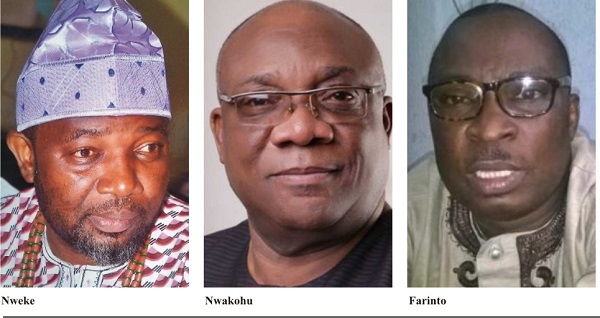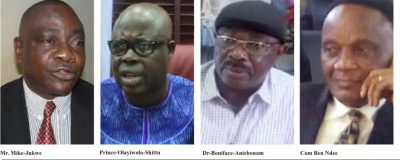Badagry Deep Seaport: The Competition And Contradiction
As part of numerous efforts by government to decongest Apapa and Tin-Can ports and the intention of making Nigeria the maritime hub of West and Central African sub-region, the concession arrangement for the Badagry Deep Seaport has been approved and finalized, according to the Minister of Transportation, Engr. Ma’azu Sambo.
Though the initiative appears like hibernating away in a cocoon of opaque and contradiction by creating another port in an area or locality that suffers congestion, vessels traffic, and heavy pressure on the access roads seems a move against wise counsel. It also raises dust on the keenness and genuineness of the move to make the eastern ports function as expected to reduce traffic and congestion in Lagos ports and pressure on the roads.
For years, the eastern ports have been under-cultivated and often times government has reiterated that it is not a political decision or deliberate policy, yet no radical steps have been taken to make the ports competitive once again. The usual attempts have always been an occasional political visit and assessments that never translate to visible actions.
However, exclusive chats with various stakeholders birthed divergent opinions on the possibilities of the Badagry Deep Seaport meeting up to expectations and not compound the problems it is presumably meant to solve.
An erudite scholar in Transport System Planning and former Vice Chancellor of Tai Solarin University of Education,Professor Olukayode Oyesiku pointed out that the Badagry Deep Seaport or any other seaport around Lagos is overdue. “I think that every effort that the government makes to decongest Apapa and Tin-Can ports will be wise at whatever cost”, he argued.
He further maintained that the choice of Lagos is based on obvious reasons which he limited to two factors, which are:
The concentration of the destination of cargoes is either around Lagos or western part of the country and that without functional rail that can move cargoes from the East down to the West, the Badagry deep seaport is actually in place.
On the other hand, the Onabisi Onabanjo University Professor insisted that unless the Lagos rail line that the Federal Government suggested is further developed and extended to Badagry in an effort to complement the roads service in put in place, the Badagry deep seaport should expect constrain of accessibility in and out of the port.
He noted that although between Ojo and Okokomaiko down to Badagry roads are already being dualized but beyond that it should be serviceable to carry cargoes or better still to further develop Agbara-Ota-Sango roads to ease evacuation and achieve the motive of the port.
Corroborating some points raised by Professor Oyesiku, the chairman Nigerian Port Consultative Council (NPCC), Chief Otunba Kunle Folarin stated that having an additional facility (port) is primarily to reduce congestion.
According to him, one of the parameters for port development is based on the destination that the shippers have requested that their cargoes to be taken to. He also pointed out that there is too much sentiment placed on eastern ports and that since Nigerian Port Authority (NPA) is already working on a 30 percent rebate for cargoes going to eastern ports, it is best to see how it plays out first. “People are going where the market is, there is no sentiments about this matter, what they should do like NPA is doing is to give incentives for those who wants to go elsewhere,” he said.
On the contrary, the president of Shippers Association of Lagos State (SALS) evangelist Leonard Ezeani Ogamba argued that the decision is highly political and not economical. He likens it to the Inland Dry Port Operational Manual launched by the government that exists only in the document. He stated that none of the inland dry port is working whereas the motive for their creation was to decongest western seaports. Evangelist Ogamba also stated that the right thing that ought to have been done was to ensure that these inland dry ports are functioning before embarking on the Badagry deep seaport.
Beyond that, he questioned the rationality of concessioning a new deep seaport when the existing ones are begging for attention and more so, the Lekki deep seaport is yet to be operational. “I don’t see the economic viability of the Badagry deep seaport for now; there should be a kind of maintenance culture. Let the government maintain the existing infrastructure before investing on a new one,” he maintained.
Recounting the ordeal of Nigerian shippers, he stated that it takes longer to take delivery of goods from Nigeria ports in any part of the country than the time it takes a vessel to arrive Nigeria from china; a thing that causes additional financial obligations on the sides of the exporters.
The Badagry deep seaport has evidently kicked-off on a wrong footing arising from questionable impulses on government stands of making eastern ports function optimally. There is no visible rail line leading to Badagry to aid evacuation, the major roads leading to it is in a sorry state and pressured. If this is not repeat of what already exist in Apapa and tin-can port, only time will tell.
However, one point that should be noted is that Badagry deep sea port has a market to service and therefore, ideally, it should not be seen as a threat to the eastern ports.
The National Inland Waterways Authority (NIWA) in a recent study posited that 60 per cent of the goods that arrive the Tin Can and Apapa ports are destined for the East, but end up there via trucking.
The Mohammed Bello-Koko- led Nigerian Ports Authority(NPA) seems determined to rehabilitate the eastern ports which have suffered long years of neglect by successive governments and when and if these ports begin to work optimally, what cargo is there to sustain the numerous ports in the west? But the consignee or shipper determines where his or her cargo goes as a function of demand and supply.
A recent visit to eastern ports showed that they are not entirely dormant as perceived. The Onne port is now the pride of the East in ship traffic and cargo volume, Rivers Port, despite its peculiar challenge of insufficient berthing spaces still receives vessels even with a spill-over of waiting vessels. The Calabar and Warri ports are however the worst hit in the general security and high siltation problems of the eastern ports. While they await dredging and maintenance dredging, they are justifying their placement with light traffic.
Recall that a former managing director of NPA, Engr. Omar Suleiman, had described the scramble for deep sea port as a development driven by politics than economic because there are no cargo to sustain their viability.
Unless, however, if the deep sea ports have specialized operations for a peculiar need or niche, the emerging competition in the near future will give credence to Engr. Suleiman’s postulation which is not different from the common problem associated with transport development in Nigeria, which is that infrastructure are not sited according to economic and social needs but political consideration. While this claim could be premised on the old order where government determined where projects are sited, the new order under which PPP and economic viability drive investment locations can be challenged by competition, bound to render some unviable without reinvention.
At this point, MMS Plus is foreseeing a future where port owners and promoters would invest in generating export cargo, especially agro-based export through what you may call “backward integration” to sustain their ports, while some others will attract manufacturing concerns, that is, developing industrial clusters within the ports to generate cargo for export, especially with the sustained government policy against import.
Besides, the Badagry port is being developed under a Public Private Partnership(PPP) model, meaning that some investors saw the opportunity and decided to invest in it. How they are able to manage the investment and make sustainable profit is their business and not of the government.
The project is expected to cost $2.59 billion and generate $53.6 billion as revenue over 45 years concession period after which the port is reverted to NPA on behalf of the government and has the potential to generate 250,000 jobs.








